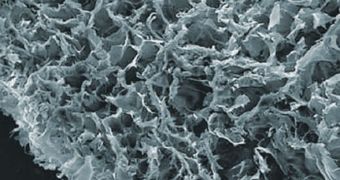Drugs that rely on the action of proteins are oftentimes very effective at treating or preventing various conditions, but one of their limitations is the fact that they cannot be easily administered gradually. In other words, pills containing them tend to release the active molecules all at once, which means that they have to be taken constantly. Recently, a team of investigators announced the development of a new type of delivery system, which can deliver its payload over a prolonged period of time.
One of the main obstacles to using protein drugs more efficiently is the fact that they are very unstable. This means that they can easily be destroyed by the immune system once inserted in the body. Plus, they can also cause plasma concentrations that are too low to have an effect, or too high. In the second scenario, the proteins themselves become toxic. This is why researchers have been working on a method of delivering the active ingredients locally and continuously. The direct result would be an increased level of overall efficiency, Chemistry World reports.
The newly-developed system consists of a biocompatible gel, made out of substances such as sodium carboxymethylcellulose and polyethyleneimine. When exposed to the physiological conditions of the human body, the two chemicals link to each other due to electrostatic forces, and create a gel, that releases proteins over a period of time. At the same time, the mix protects the unstable active ingredients from the action of the immune system. The team that obtained the biocompatible gel is based at the Ajou University, in South Korea, and was led by expert Moon Suk Kim.
In the lab experiments the team conducted, it was revealed that the new gel can release the protein albumin for a period of up to 15 days, while at the same time remaining impervious to the attempts various types of cells in the body made to penetrate it. “We believe the results of the present study provide new options for sustained in vivo release of highly potent therapeutics, and represent a useful experimental platform for future protein delivery research,” Kim says of the work.
“A significant revolution in the delivery of therapeutic agents is occurring. While considerable focus has been on the use of nanoparticles, alternative methods such as reported in this work are showing considerable promise,” adds Melbourne University drug delivery systems expert David Dunstan.

 14 DAY TRIAL //
14 DAY TRIAL //